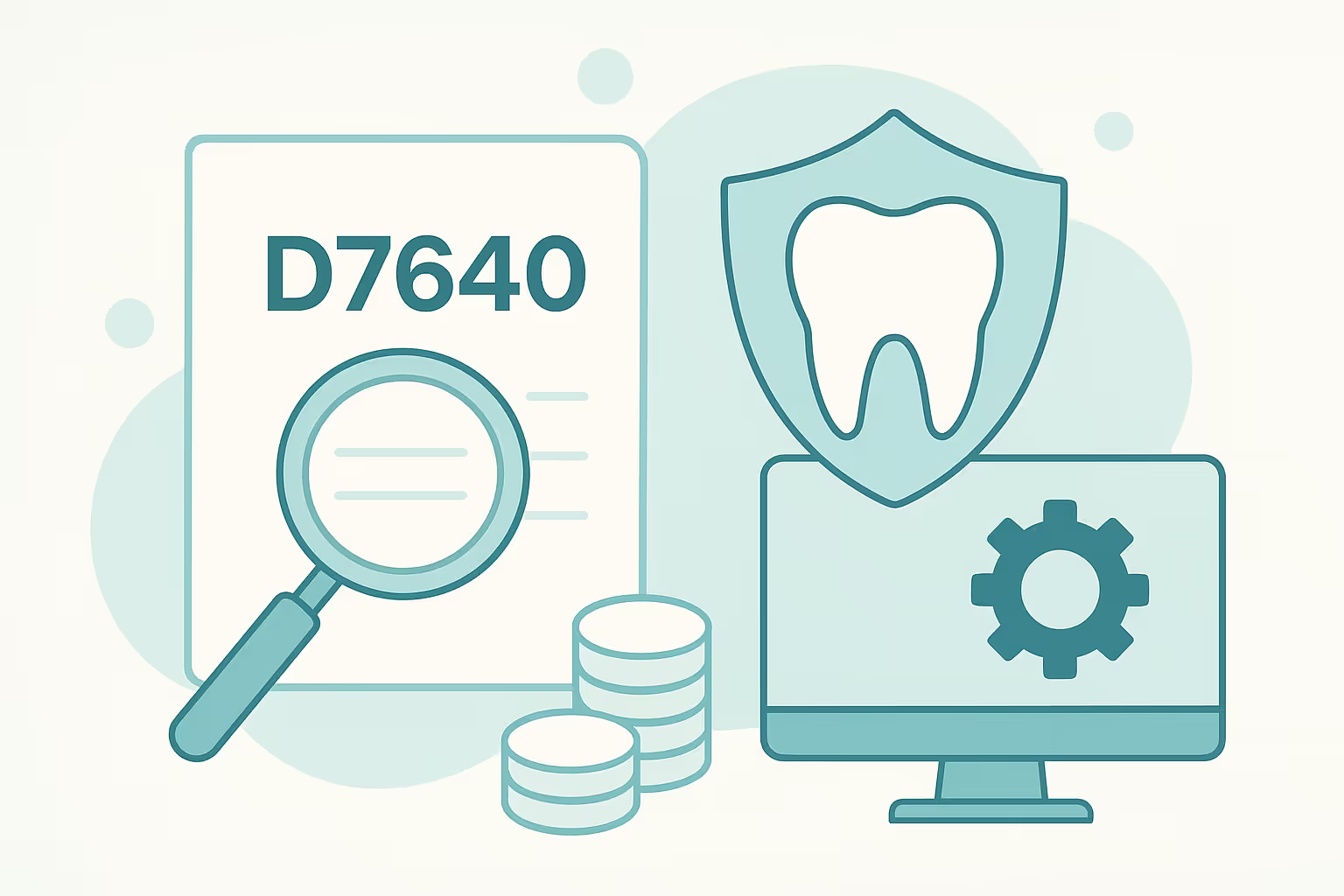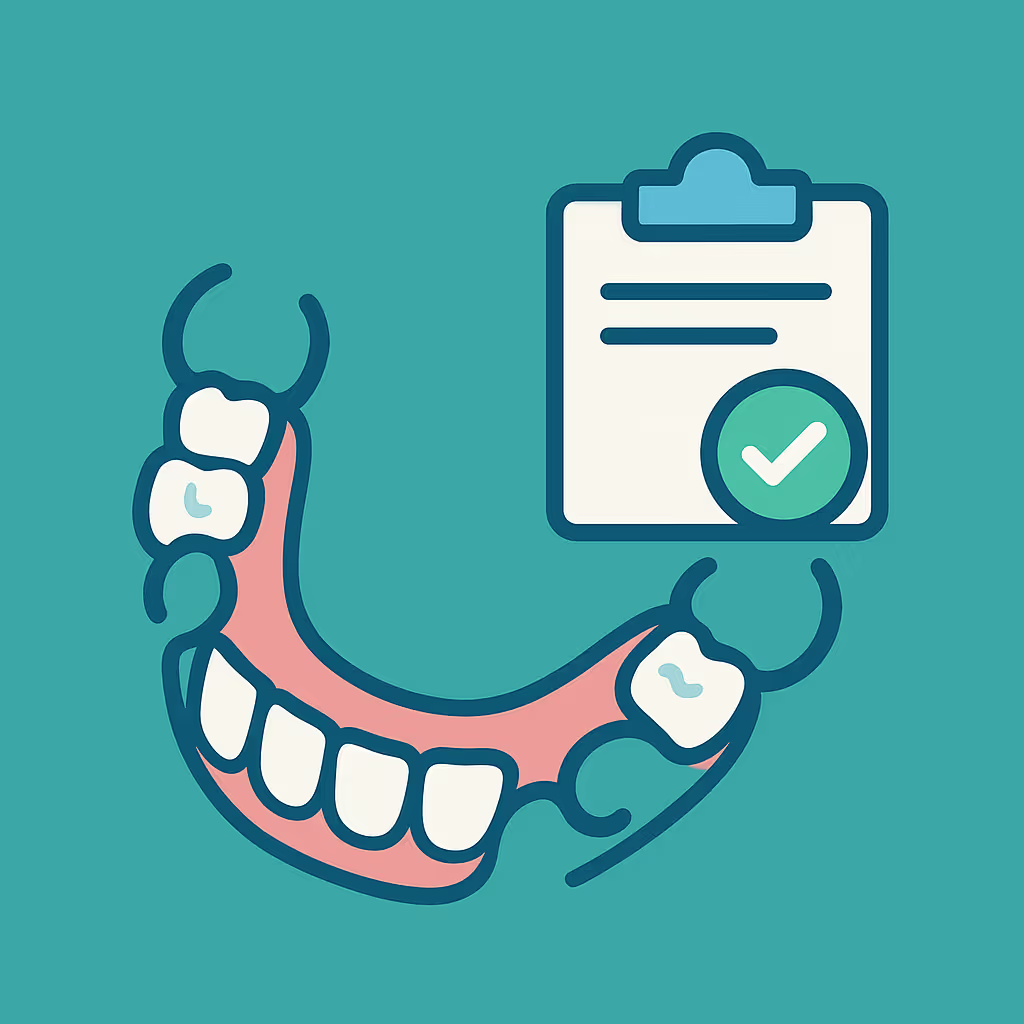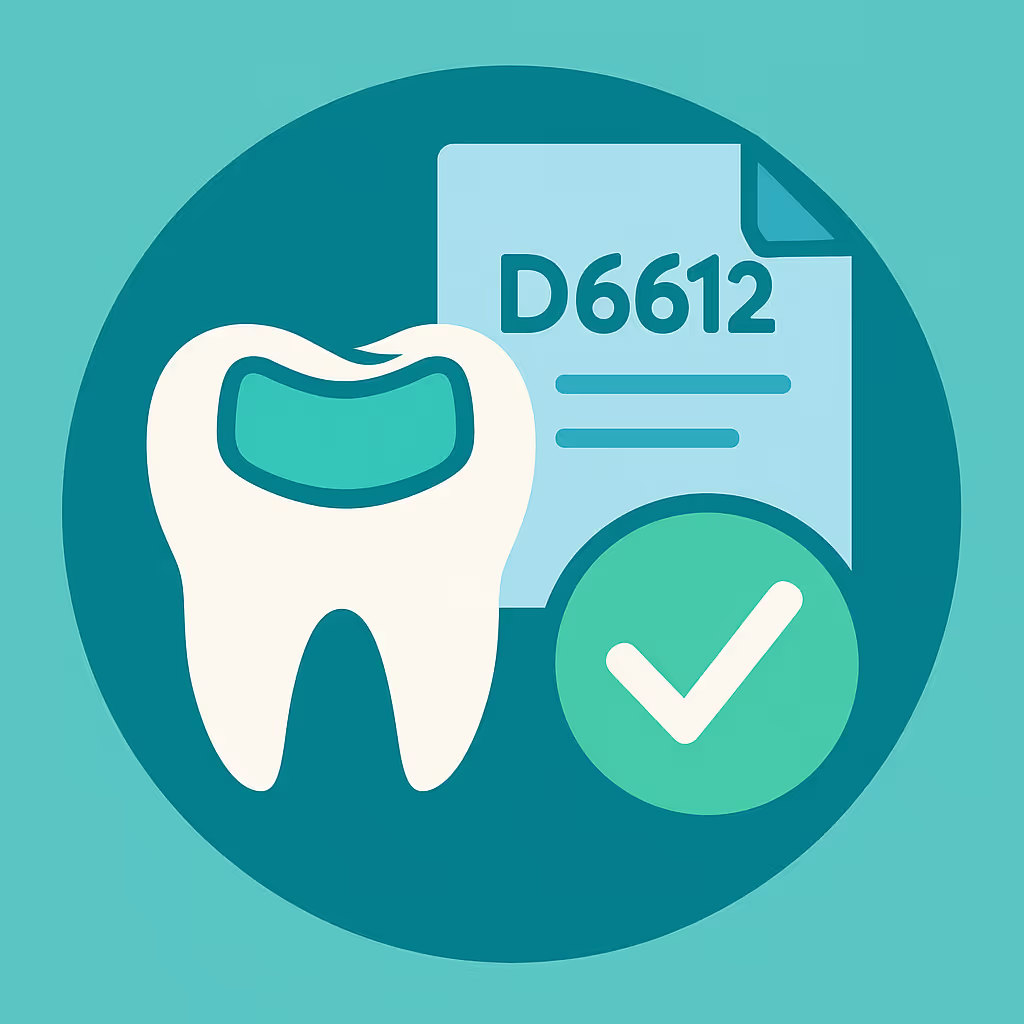Understanding Dental Code D7640
When to Use D7640 dental code
The D7640 dental code is designated for the surgical removal of the mandible, with or without bone graft. This CDT code is specific to cases where a portion or the entire mandible (lower jaw) must be surgically excised due to pathology, trauma, or other medically necessary reasons. Dental practices should use D7640 only when the procedure meets the clinical criteria outlined by the ADA and is supported by comprehensive documentation. It is not appropriate for routine extractions or minor bone removal; instead, it is reserved for complex surgical cases involving significant jaw resection.
Documentation and Clinical Scenarios
Accurate documentation is crucial when billing for D7640. Clinical notes should clearly describe the diagnosis (such as benign or malignant tumors, severe infection, or traumatic injury), the extent of the mandible removal, and any related procedures (e.g., bone grafting, reconstruction). Include preoperative imaging, pathology reports, and a detailed surgical narrative. Common clinical scenarios for D7640 include:
- Resection of the mandible due to osteomyelitis or osteoradionecrosis
- Removal of jaw segments affected by tumors or cysts
- Mandibular resection following severe facial trauma
Ensure that all supporting documents are attached to the claim to minimize delays and denials.
Insurance Billing Tips
Billing D7640 requires attention to detail and proactive communication with payers. Here are best practices for successful claim submission:
- Preauthorization: Always verify insurance benefits and obtain preauthorization before performing the procedure. Many carriers require medical necessity documentation and prior approval for D7640.
- Detailed Claims: Submit claims with comprehensive clinical notes, radiographs, and pathology reports. Incomplete documentation is a common reason for claim denial.
- Coordination of Benefits: For cases involving both dental and medical insurance, coordinate benefits and submit to the appropriate carrier first. Use the Explanation of Benefits (EOB) from the primary payer when submitting to the secondary.
- Appeals Process: If a claim is denied, review the EOB for denial reasons, gather additional supporting documentation, and submit a timely appeal with a cover letter explaining medical necessity.
Following these steps can help reduce accounts receivable (AR) days and improve reimbursement rates for complex surgical procedures.
Example Case for D7640
Consider a patient presenting with a large benign tumor on the left mandible. After diagnostic imaging and biopsy, the oral surgeon determines that a segmental resection is necessary. The procedure involves removing the affected portion of the mandible and placing a bone graft for future reconstruction. The dental team documents the diagnosis, surgical plan, and postoperative care in detail. They obtain preauthorization from the patient’s insurance and submit a claim with all supporting documents. The claim is approved, and payment is received promptly, demonstrating the importance of thorough documentation and adherence to billing protocols for D7640.





